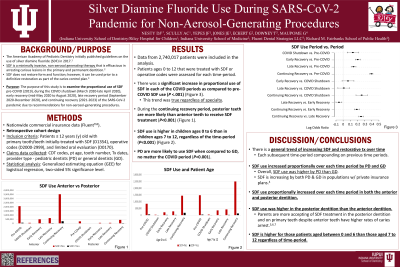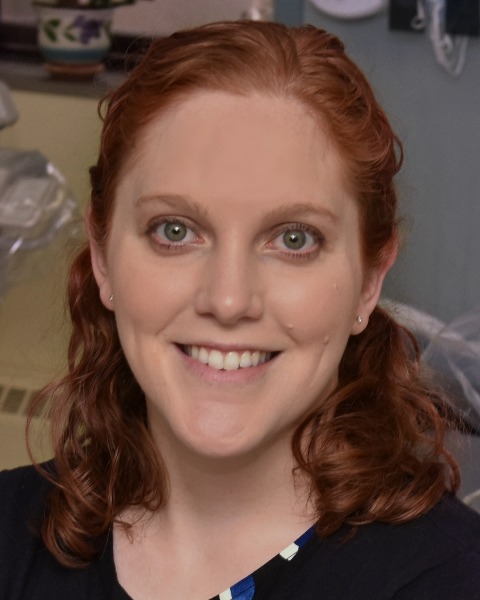Restorative
142 - Silver Diamine Fluoride Use During SARS-CoV-2 Pandemic for Non-Aerosol-Generating Procedures

- DN
Dylan J. Nesty, DDS (he/him/his)
Resident
Indiana University, Bloomington, IN
Indiana University/Riley Hospital for Children
BRAZIL, Indiana, United States - JJ
James E. Jones, DMD, MSD, EdD, PhD
Indiana University/Riley Hospital for Children
- JY
Juan F. Yepes, DDS, MD, MPH, MS, DrPH, FDS RCDS(Ed)
Indiana University/Riley Hospital for Children

Allison C. Scully, DDS, MS, FAAPD
Assistant Professor
Riley Children's Hospital/Indiana University
Indiana University
Indianapolis, Indiana, United States- LV
LaQuia A. Vinson, DDS, MPH
Associate Professor
Indiana University, Bloomington, IN
Indianapolis, Indiana, United States
Presenting Author(s)
Co-Author(s)
Research Mentor(s)
Program Director(s)
Purpose: The purpose of this study is to examine the proportional use of SDF pre-Covid (2019), during the Covid shutdown (March 2020-late April 2020), early recovery (mid-May 2020 to August 2020), late recovery period (September 2020-December 2020), and continuing recovery (2021-2023) of the SARS-CoV-2 pandemic due to recommendations for non-aerosol-generating procedures.
Methods: Data in this study was obtained through Fluent Dental Solutions, a national dental data warehouse. CDT Codes for Interim Caries Arresting Medicament (D1354), Limited Re-evaluation (D0170), and Operative Codes (D2000-2999) were assessed. Other variables included treatment dates, and patient and dentist information. A retrospective analysis of dental claims made over a five-year period was completed, and data points were used to determine the first treatment rendered. Analyses were conducted using generalized linear mixed models and a two-sided 5% significance level was used for all tests.
Results: There was a significant increase in SDF usage in each of the Covid periods as compared to pre-Covid SDF use (P < .001). During continuing recovery, posterior teeth were more likely to have SDF applied than anterior teeth (P < .001). However, this was not seen in the Covid shutdown, early, or late recovery periods (P>.05).
Conclusion: Quantitatively, SDF usage proportionally increased during each of the Covid periods as compared to pre-Covid SDF use, suggesting a shift toward non-aerosol-generating procedures. This could guide decision-making for operative treatment and the use of SDF as a treatment option in times when traditional aerosol-generating procedures are not available.
Identify Supporting Agency and Grant Number: Research supported by Indiana University Graduate Research Committee.

.jpg)